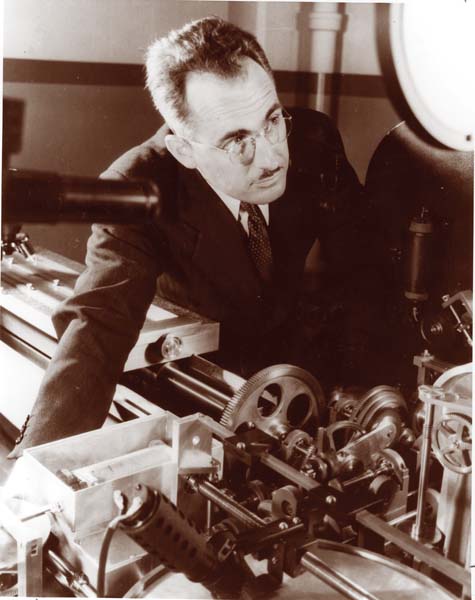George R. Harrison

George Russell Harrison was born on July 14, 1898 in San Diego, California. Harrison's interest in physics may have been fostered by friends of his father, the Varian brothers, who invented the Klystron and founded the electronics firm in Palo Alto that bears their name. Harrison entered Stanford University in 1915 and majored in physics. Despite a brief interruption in his studies, associated with World War I, he received a bachelor's degree in 1919.
That autumn he enrolled in the Stanford graduate school as a candidate for the master's degree in physics. During this period he was chosen to tutor Herbert Hoover, Jr., and for several years he lived on the Stanford campus with the Hoover family, thereby beginning a long and close friendship. Harrison chose to study spectroscopy and his doctoral thesis, completed in 1922, was the basis of a paper, "The Absorption of Light by Sodium and Potassium Vapors," published later that year in the Proceedings of the National Academy of Sciences.
His promise as a research physicist led to the award of a National Research Council Fellowship for work with the renowned spectroscopist of the vacuum ultraviolet, Theodore Lyman of Harvard. The two years he spent in Lyman's laboratory (1923-25) deepened and broadened his knowledge of the world of physics. Harrison returned to Stanford where he began building up a laboratory, which soon included a 21-foot vacuum spectrograph, the largest of its day. He was promoted to associate professor in 1927.
In 1930, Harrison accepted a professorship in experimental physics at the Massachusetts Institute of Technology (MIT) offered by MIT’s new president, Karl T. Compton, who also was a specialist in vacuum spectroscopy. Together they founded the MIT Spectroscopy Laboratory, the first building designed and constructed for the particular needs of spectroscopy. Harrison became dean of science at MIT in 1942 and oversaw the postwar development of the School of Science until his retirement in 1964.
The most noteworthy of his many achievements were the development of a high-speed automatic comparator for the recording of intensities and wavelengths of spectral lines, the compilation of the MIT Wavelength Tables, and the invention of the echelle spectrograph. He was the first to devise a practical ruling engine, servo-mechanically controlled by means of optical interferometric techniques, which he used to produce diffraction gratings of unprecedented optical quality and size.
During World War II, Harrison was chief of the Optics Division of the National Defense Research Committee, and later head of the Office of Scientific Research and Development's Office of Field Service in the Pacific Theater. He was awarded the U.S. Medal of Freedom and the Presidential Medal of Merit.
Harrison was the author or co-author of more than 100 scientific papers. In 1948, he published the well-known text, Practical Spectroscopy, with Richard C. Lord and John R. Loofbourow. He also wrote books for the layman on scientific and engineering subjects, the best known of which, Atoms in Action, was translated from English into more than a dozen other languages.
He received many medals, awards, and honorary degrees for his scientific accomplishments, including the Rumford Medal of the American Academy of Arts and Sciences, the Cresson Medal of the Franklin Institute, the Ives and Mees Medals and the Meggers Award from OSA, and the Pittsburgh Spectroscopy Award. He was a Fellow of the American Philosophical Society, APS, the American Academy of Arts and Sciences, OSA, and the Australian Academy of Science, and he held many high offices in these and other scholarly organizations. He was elected an Honorary Member of OSA.
George R. Harrison died 27 July 1979.
Document Created: 26 Jul 2023
Last Updated: 28 Aug 2023
